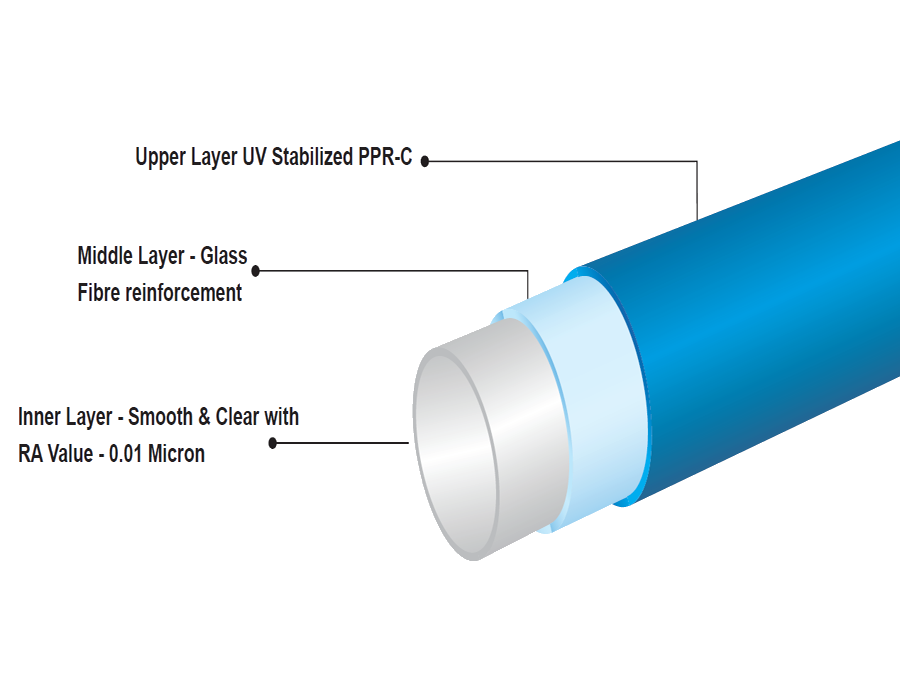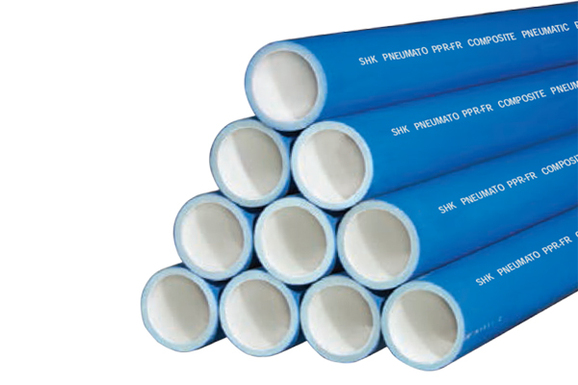SHK Flame Retardant Pipes :
Thermoplastic Polyolefin being organic compound burns or decompose on exposure to fire generates toxic fumes & smoke, but Flame Retardant or Fire resistant compounds help mitigate fire danger. In order for fire to occur its three basic elements (fuel, heat, and oxygen) must exist. The science of flame retardance uses chemical reactions to moderate one or more of these attributes.
A variety of flame retardant additives can be deployed in thermoplastic polymers depending on the requirements of individual end-use applications.During combustion, flame retardant additives react with the burning polymer in the vapor phase disrupting, at a molecular level, the production of free radicals and shuts down the combustion process. This mechanism is commonly used with halogenated flame retardant systems.
Application :
- Compressed Air
- Vacuum Air
- Instrument Air
- Nitrogen Air
Improving Product Safty With Flame Retardant Plastics
Using flame retardant technologies to reduce fire hazards is a basic element of product safety. The objective of flame retardant systems is to delay ignition and/or fire spread.

Flame Retardant Compounds Help Mitigate Fire Danger
- Increase plastic’s ignition resistance
- Reduce the speed of flame spread
- Reduce heat release
- Reduce smoke & fume generation
When exposed to heat or flame, plastics undergo pyrolysis, which results in thermal degradation of the resin’s physical properties (softening and melting) and releases gases that are potentially volatile.
Flame retardant plastics attempt to combat these conditions through one of several mechanisms that moderate one or more of the elements (fuel, heat, or oxygen) necessary for burning to take place.
Even with flame retardant treatment, no plastic can be rendered entirely fire proof. Under flashover conditions all plastics, even those that are inherently fire resistant, will at some point combust.
Flame Retardant Compounds Help Mitigate Fire Danger
|
PNEUMATO BLUE PPR PIPE FRV2 AIRLINE |
Type | Size | PN – 06 Pipes | 200 MM To 400 MM | PN – 10 Pipes | 50 MM To 315 MM | PN – 16 Pipes | 20 MM to 315 MM | PN – 20 Pipes | 20 MM to 315 MM |




